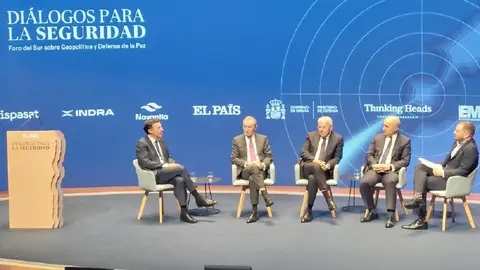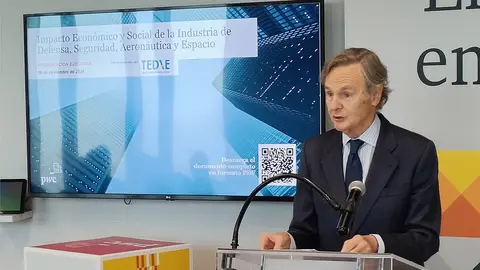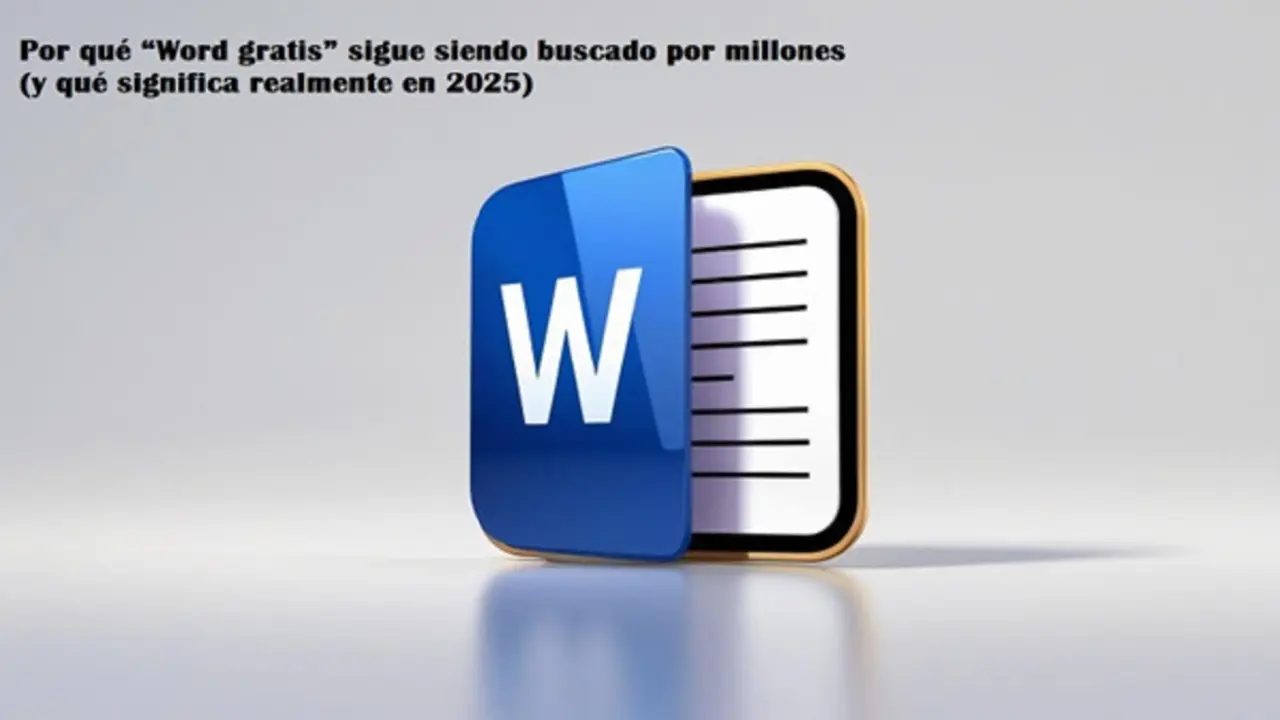Spain's aerospace ecosystem prescribes its strategic recipe for after 2030
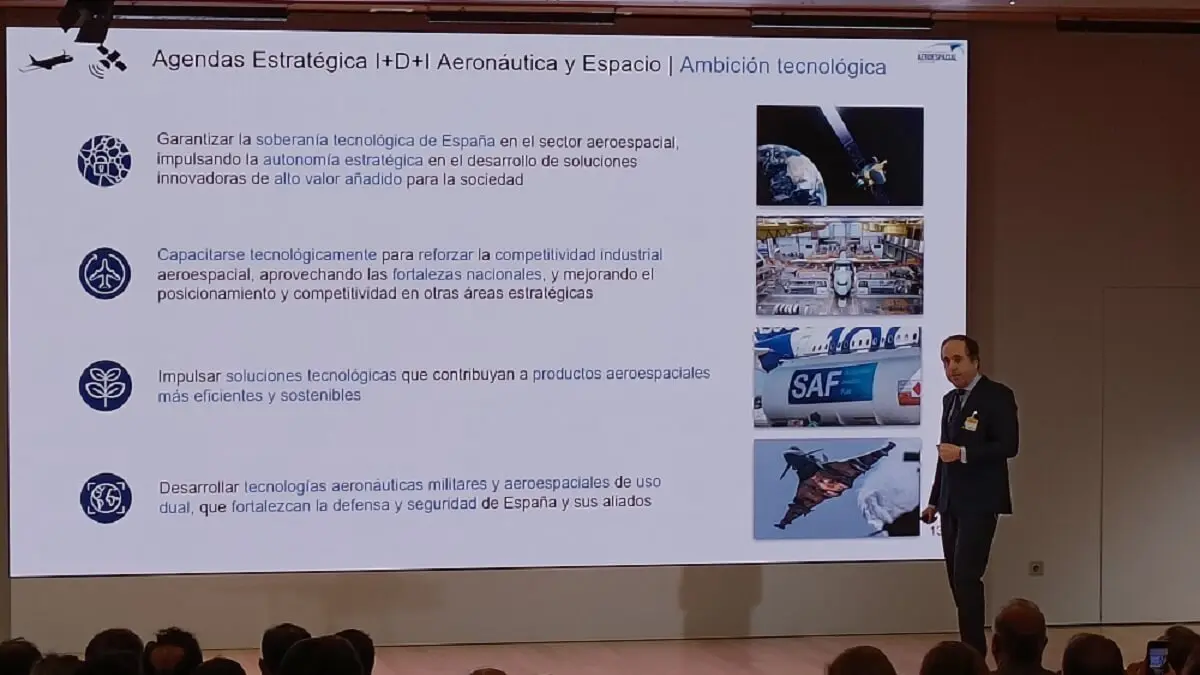
- Training in electric and hydrogen propulsion
- Financing and guaranteeing multi-year national programmes
The national ecosystem of companies and institutions that make up the Spanish Aerospace Technology Platform (PAE) has finally prescribed the recipe and the dosage that Spain should follow if it aspires to position itself on the horizon of 2040 as a key player in the European and global aeronautical and space panorama.
In an attempt to smooth the way and show the way forward to the government and regional authorities, a large and experienced team of managers and executives from the 139 companies, technology centres, universities and official institutions that make up the PAE have defined the strategic research, development and innovation (R+D+i) agendas that should serve as a guide for intra-national cooperation to strengthen national competitiveness and innovation in the hotly contested global aerospace arena.
It is a kind of roadmap that identifies more than a hundred priorities on which it is advisable for future sectoral plans of public administrations to focus in order to increase national technological sovereignty. The aim of both agendas is to strengthen the industrial fabric with specific products and services and, in doing so, prevent Spain from being undervalued, left behind or relegated from the major development, manufacturing and commercialisation programmes that are expected to take off by the end of the current decade.
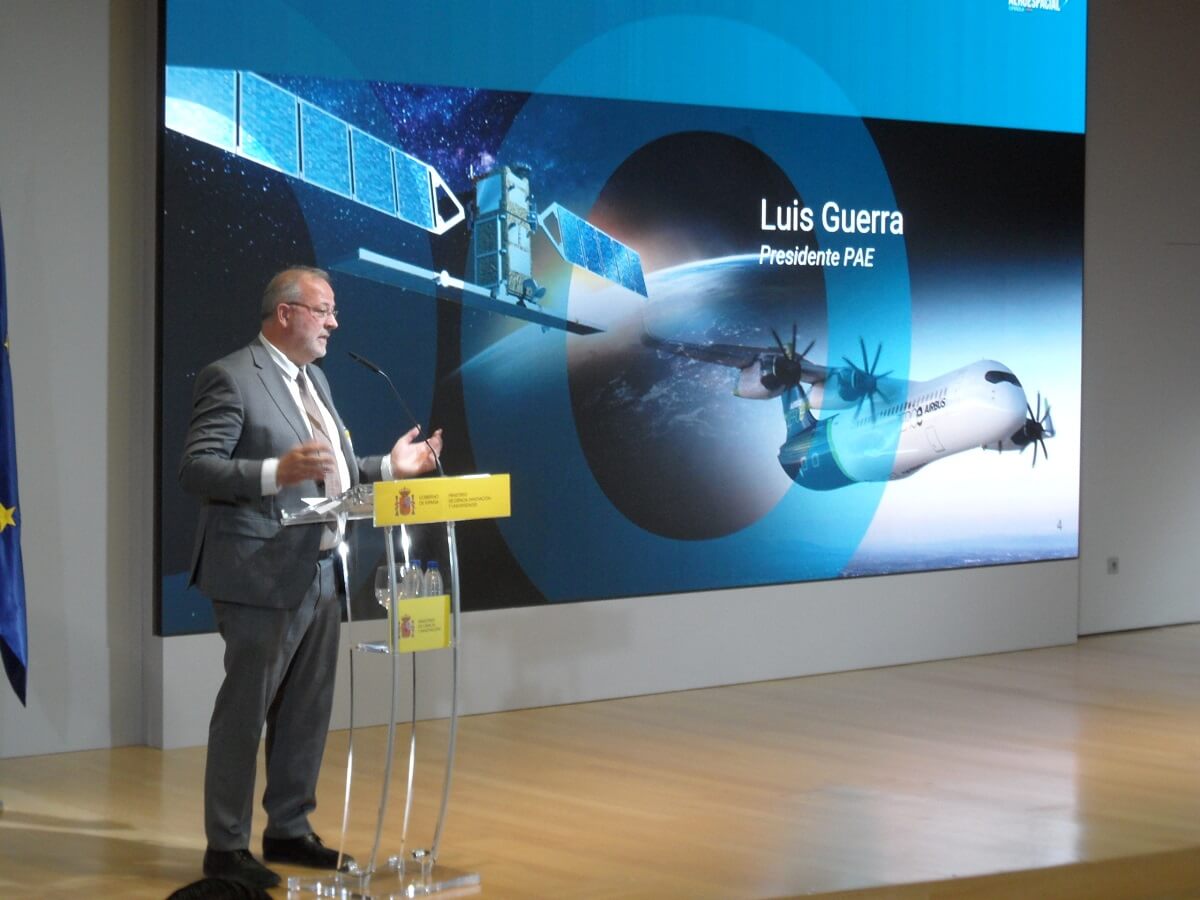
It is clear that the current world scenario is going through a period of volatility, complexity and ambiguity, with a runaway trade war that makes it very difficult to plan in the long, medium and sometimes even short term. However, the general coordinator of the two agendas and, in turn, responsible for the technological planning of the industrial corporation Airbus, Jaume Marcos, has highlighted another important fact: ‘The aerospace sector is growing, air traffic is growing, which indicates that there is a lot of business ahead’.
When presenting the new documents to the public, Jaume Marcos stated that ‘Spain must now make the technological investments that will position the entire national aerospace ecosystem in the major programmes that will come into service in the next decade’. It relies on existing strengths, including the fact that ‘Spain is already a leader in carbon fibre technologies, in transport aircraft (C295), in air-to-air refuelling aircraft (MRTT) and a benchmark in advanced air traffic management and control systems’.

Training in electric and hydrogen propulsion
The strengths are reflected in some of the strategic aeronautical priorities identified, such as doing everything possible to become strong in the next generation of commercial aircraft of single pass, which means achieving a high level of training ‘in emerging electric propulsion and hydrogen fuel cell technologies,’ he stresses.
In the military sphere, it is essential to ‘maintain’ the high capabilities already in place to develop, produce and have the full life cycle in drones and, very especially, ‘in tactical transport aircraft, maritime patrol, anti-submarine warfare and in-flight refuelling’.
Particular importance is given to increasing the use of robotics in manufacturing and assembly lines, which in the near future will be high-speed given the large number of orders accumulating in the factories of large manufacturers, such as Airbus. Added to this is the convenience of digitising the final product and the value chain with the use of ‘digital twins’.
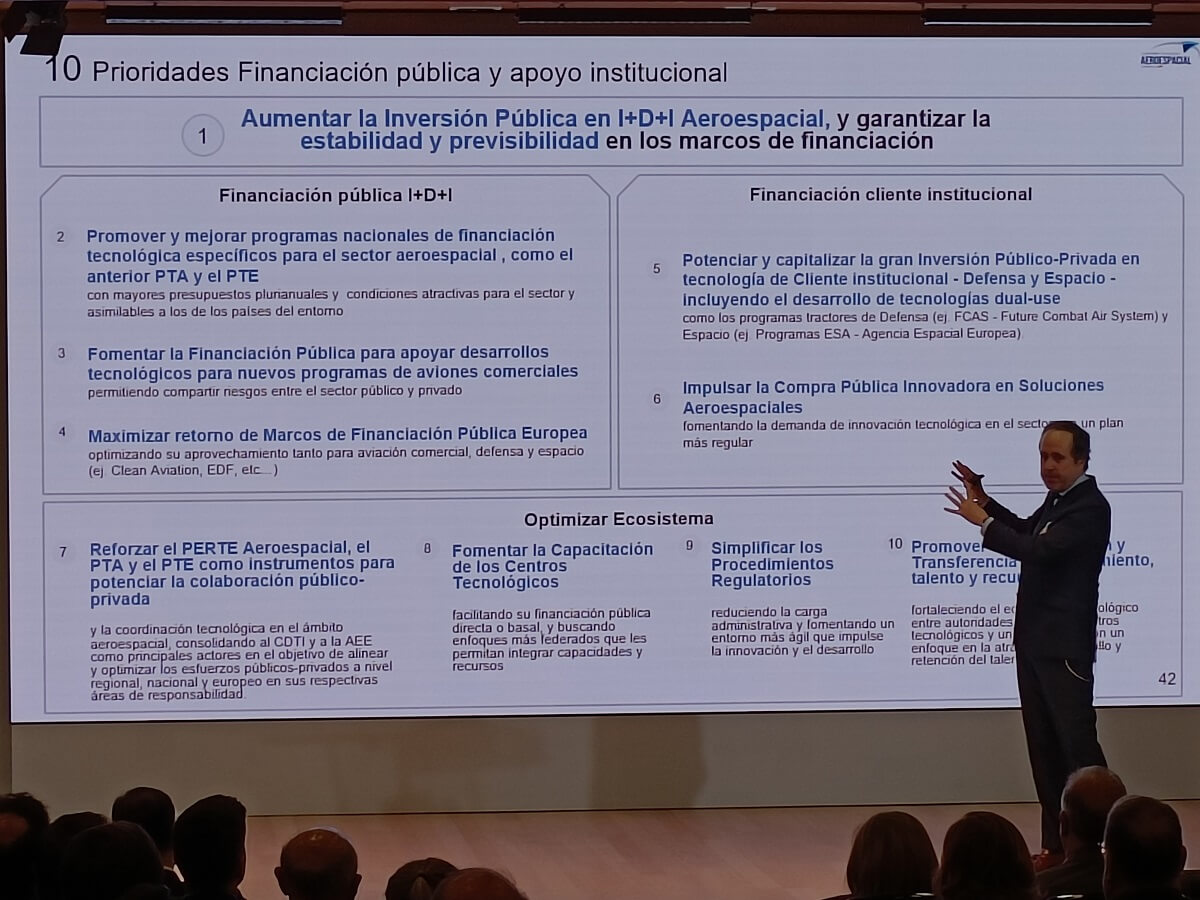
Another area of activity that is to be strengthened is Spanish participation in ‘variable cycle engines and vectorised propulsion for fighter aircraft’, together with increasing the national presence in the development of ‘propulsion plants for commercial aircraft’. And, of course, to promote innovative public procurement and the use of sustainable aviation fuels (SAF) as a clean alternative to the fossil fuels that power aircraft.
In terms of weaknesses, it is noted that, for example, technological activity in military aircraft ‘is centred on large European programmes, to the detriment of national programmes’, which makes it difficult for Spanish companies to assert their technological interests in the international cooperative arena.

Financing and guaranteeing multi-year national programmes
Before an audience of some 300 professionals from the national aerospace ecosystem, the speech by the president of PAE, Luis Guerra - former director of Airbus Space Systems in Spain - and also that of Jaume Marcos, once again brought up the sector's repeated and widespread demand, which is ‘to guarantee the stability of the financing frameworks with specific multi-year national programmes’.
The agendas make it clear, as Jaume Marcos emphasises, that the aerospace industry is ‘strategic and a priority for Spanish society and the Spanish economy’ and is at a ‘turning point’, making effective collaboration between authorities, industries, research centres and universities essential.
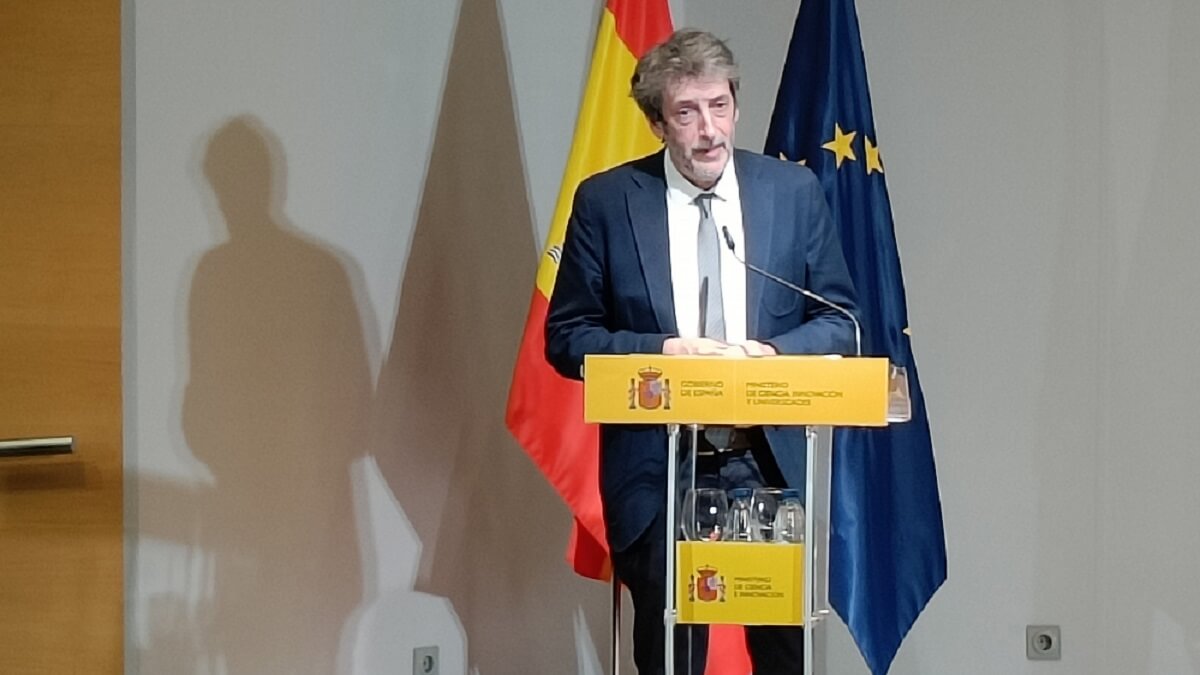
In terms of institutional support, there have been renewed calls to ‘increase public investment in R&D&I’ and also to strengthen the PERTE Aerospace programme, ‘an instrument that enables the promotion of public-private collaboration’.
The director of innovation policy at the Centre for the Development of Industrial Technology (CDTI), Juan Antonio Tébar, has taken this position, adding that ‘if we want Spain to be a technologically competitive country, we have to start working now’.
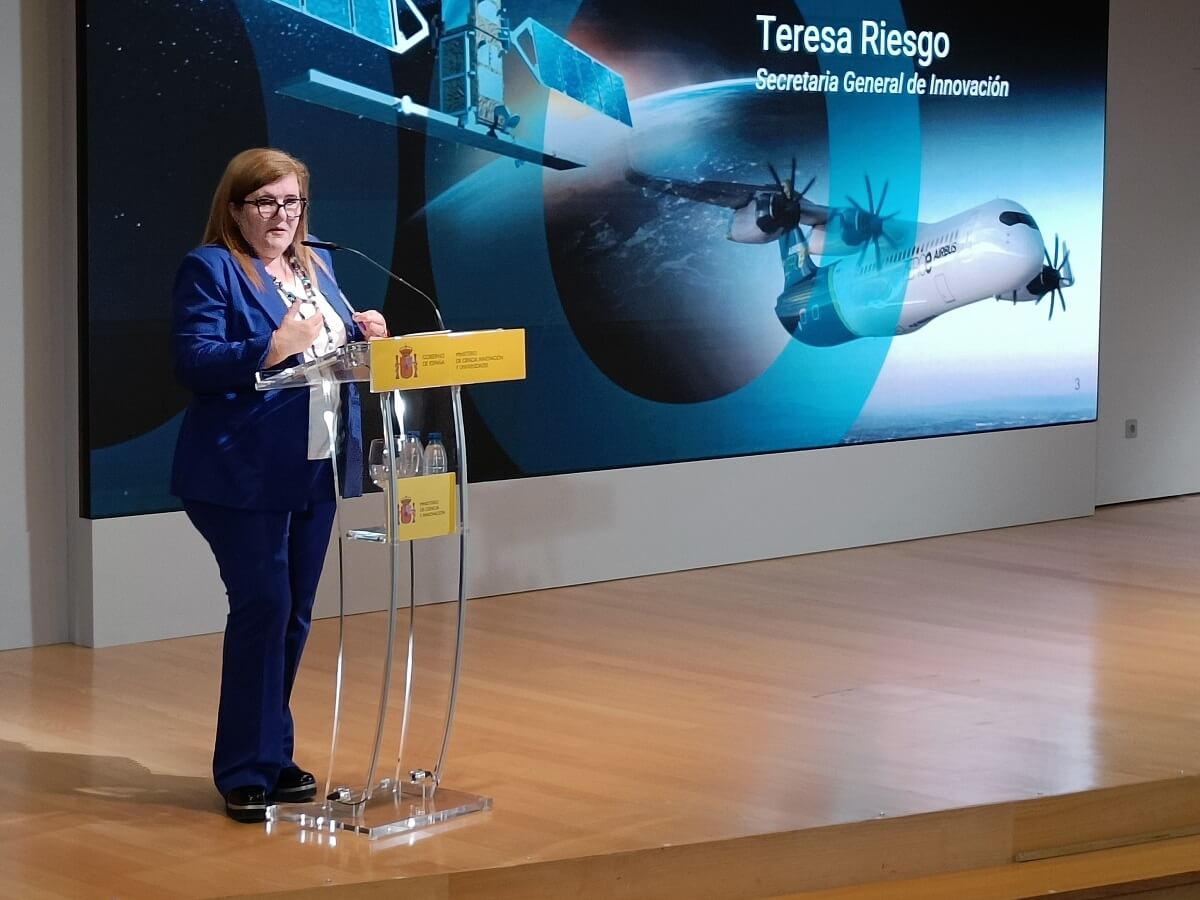
The general director of the CDTI since the beginning of 2024, José Moisés Martín Carretero, has specified the four principles that should mark the next steps for the two sectors: responsibility, long-term ambition, predictability and collaboration. On the last point, Martín Carretero focused not only on the need for public-private cooperation, but also on the desirability of ‘strengthening and consolidating public-public cooperation and promoting private-private collaboration, since Spain has large driving companies’.
The Secretary General for Innovation of the Ministry of Science, Teresa Riesgo, who opened the conference, once again emphasised that the sector is ‘strategic’, that the agendas are going to be ‘very useful’ for the work of her department and that, at a recent meeting of European aeronautical centres which she attended a few weeks ago, third countries have expressed their interest in learning about the content of the Spanish strategic R&D&I agendas in aeronautics and space.



